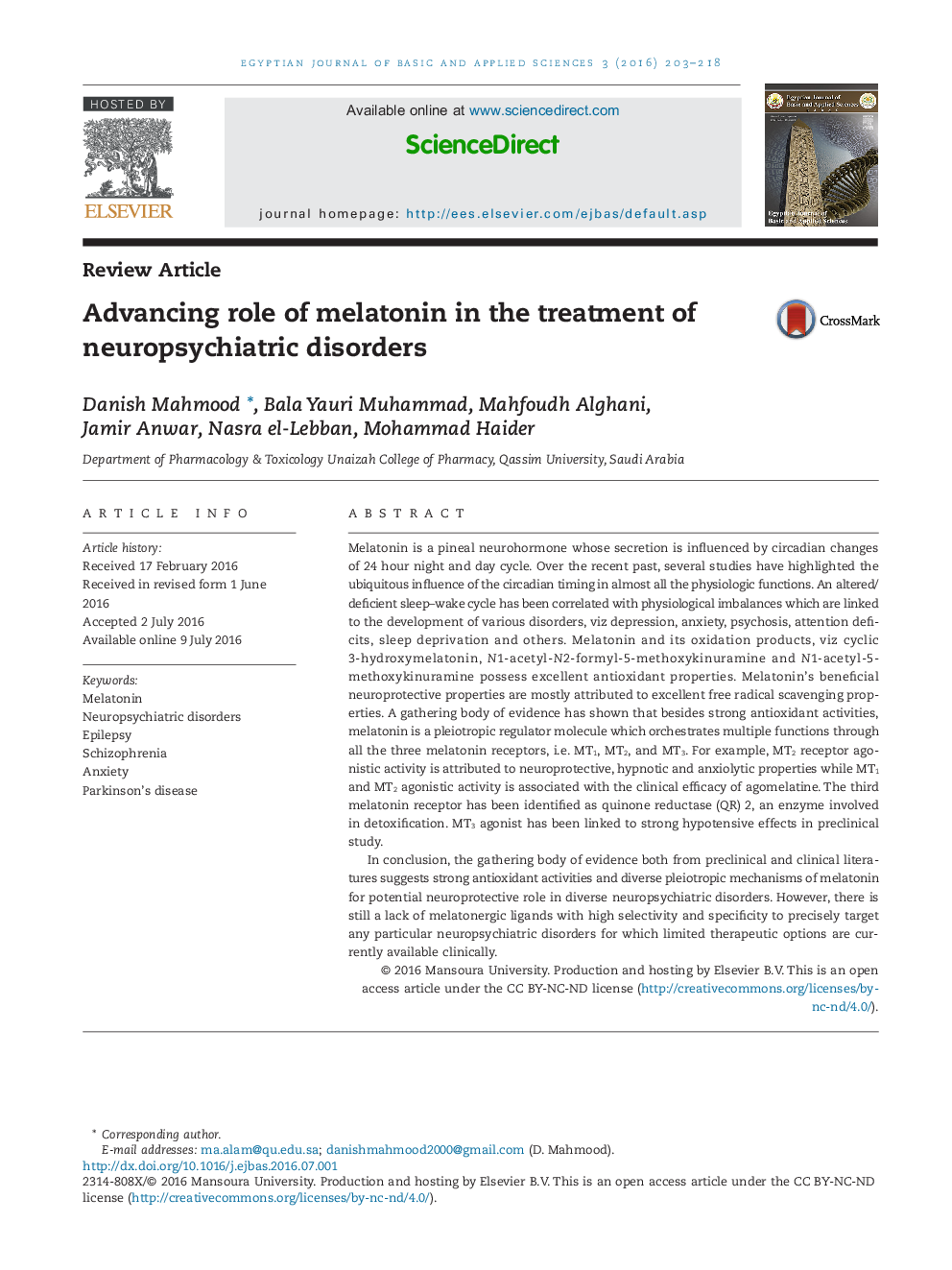| Article ID | Journal | Published Year | Pages | File Type |
|---|---|---|---|---|
| 560986 | Egyptian Journal of Basic and Applied Sciences | 2016 | 16 Pages |
•Diverse role of melatonin in neuropsychiatric disorders.•Melatonin role in epilepsy.•Melatonin role in schizophrenia.•Melatonin role in depression.•Melatonin role in anxiety.
Melatonin is a pineal neurohormone whose secretion is influenced by circadian changes of 24 hour night and day cycle. Over the recent past, several studies have highlighted the ubiquitous influence of the circadian timing in almost all the physiologic functions. An altered/deficient sleep–wake cycle has been correlated with physiological imbalances which are linked to the development of various disorders, viz depression, anxiety, psychosis, attention deficits, sleep deprivation and others. Melatonin and its oxidation products, viz cyclic 3-hydroxymelatonin, N1-acetyl-N2-formyl-5-methoxykinuramine and N1-acetyl-5-methoxykinuramine possess excellent antioxidant properties. Melatonin's beneficial neuroprotective properties are mostly attributed to excellent free radical scavenging properties. A gathering body of evidence has shown that besides strong antioxidant activities, melatonin is a pleiotropic regulator molecule which orchestrates multiple functions through all the three melatonin receptors, i.e. MT1, MT2, and MT3. For example, MT2 receptor agonistic activity is attributed to neuroprotective, hypnotic and anxiolytic properties while MT1 and MT2 agonistic activity is associated with the clinical efficacy of agomelatine. The third melatonin receptor has been identified as quinone reductase (QR) 2, an enzyme involved in detoxification. MT3 agonist has been linked to strong hypotensive effects in preclinical study.In conclusion, the gathering body of evidence both from preclinical and clinical literatures suggests strong antioxidant activities and diverse pleiotropic mechanisms of melatonin for potential neuroprotective role in diverse neuropsychiatric disorders. However, there is still a lack of melatonergic ligands with high selectivity and specificity to precisely target any particular neuropsychiatric disorders for which limited therapeutic options are currently available clinically.
